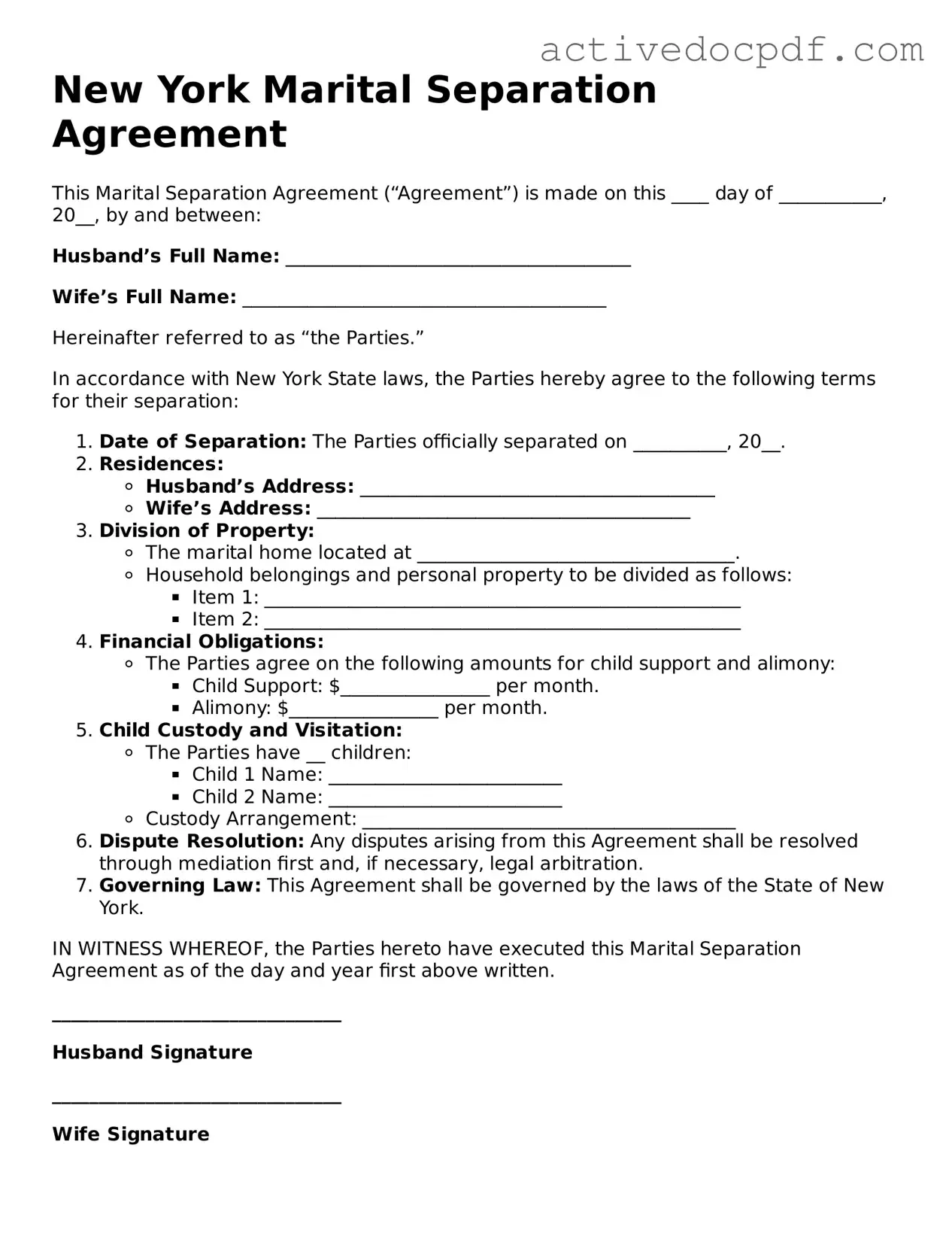Guide to Filling Out New York Marital Separation Agreement
Once you have the New York Marital Separation Agreement form in hand, it’s time to fill it out carefully. This document will require specific information about you and your spouse, as well as details regarding your separation. Follow these steps to ensure that you complete the form accurately.
- Begin with the title section. Write “Marital Separation Agreement” at the top of the form.
- Provide your full name and address in the designated spaces. Do the same for your spouse.
- Include the date of your marriage and the date of your separation. Be precise with these dates.
- Detail any children from the marriage. List their names, birthdates, and any custody arrangements you wish to establish.
- Outline the division of property. Clearly specify which assets each party will retain.
- Address financial matters. Include any spousal support or alimony agreements, if applicable.
- Sign and date the agreement at the bottom. Make sure both parties sign it in the presence of a notary public.
- Make copies of the signed agreement for both parties. Keep these copies in a safe place.
After completing the form, both parties should review it to ensure all information is correct. If necessary, you may want to consult with a legal professional to confirm that the agreement meets all requirements before finalizing it.
